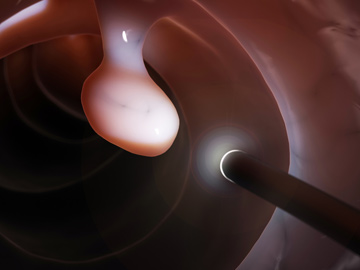
[Image: iStock]
A study from the firm Allied Market Research has projected that the global market for endoscopy devices could balloon from an estimated US$27.3 billion in 2015 to US$40.9 billion in 2022—a compound annual growth rate of 5.7 percent over the seven years.
Growth drivers
The report cites a number of factors behind the expected robust growth. Particularly important, the study says, will be an expected rise in cancers and gastrointestinal diseases requiring endoscopic evaluation, especially owing to the aging of world populations. Ongoing technological development and innovation in the space, and an increasing preference for less invasive diagnostic techniques among both patients and physicians, could also drive the market.
Meanwhile, the study argues, some of the factors holding back the market at present could lessen in coming years, further helping the overall growth rate. Those factors include the current high cost of endoscopic devices, a comparative lack of practitioners skilled in their use, and cases of infections caused by endoscopic devices—all market pressures that could ease owing to advances in the technology and its application.
Capsules on the rise
According to the study, flexible endoscopes continue to dominate the overall endoscopy-device market, accounting for a three-quarters share in 2015. The endoscope segment is expected to grow at a compound annual rate of 6.0 percent through 2022.
Yet the report suggests that revenues in certain tech-driven niche segments could expand at an even more rapid pace. For super-miniaturized capsule endoscopes, for example, the report envisions growth at a compound annual rate of 8.7 percent, driven by advances in imaging technology and the increasing prevalence of gastrointestinal conditions that constitute the sweet spot for these vitamin-pill-sized devices.
In terms of applications, laproscopy—the use of endoscopes to guide “keyhole” or minimally invasive surgery—will generate the greatest revenues, according to the Allied study, but gastrointestinal interventions will likely grow at the fastest rate. That’s because, the study notes, the aging of the Baby Boomer population cohort will likely drive a surge in gastrointestinal medical conditions.
North America dominates
Geographically, the Allied report notes that North America continues to account for more than a third of the market for endoscopy devices, with the United States alone contributing more than 94 percent of that market share. The report expects that North America will continue to dominate the market in the next several years.
Yet the Asia-Pacific region, Allied suggests, could also be a zone to watch. In this market, in which Japan alone currently accounts for more than a 50 percent share of demand for endoscopic devices, large-scale, currently unmet needs for medical diagnostics and efforts to improve quality of life in emerging nations could create a variety of growth opportunities in other countries, according to the firm.
More information on the report can be found at www.alliedmarketresearch.com/endoscopy-devices-market.
